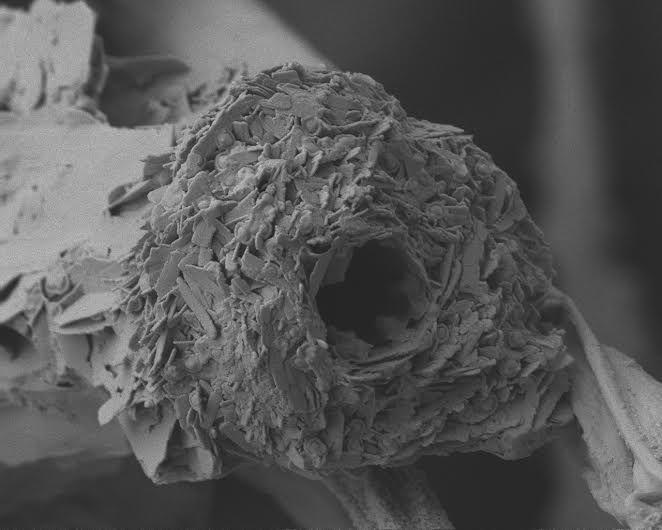Could Mold Power the Batteries of the Future?
Researchers have discovered how to use a fungus to create materials that could be used to make more sustainable lithium-ion batteries
/https://tf-cmsv2-smithsonianmag-media.s3.amazonaws.com/filer/5a/19/5a191040-7a3d-460c-a78c-5d0a70a9da55/neurospora-crassa.jpg)
An ordinary mold has extraordinary properties when it comes to powering batteries, Scottish researchers have discovered.
The mold, Neurospora crassa, also known as red bread mold, can change manganese chloride into a compound containing manganese oxides, which have electrochemical properties.
“This was quite a big surprise it was so effective,” says Geoffrey Gadd, a microbiologist at the University of Dundee in eastern Scotland.
Gadd’s team grew the fungus in a medium containing urea and manganese chloride. The material became “biomineralized.” Gadd says, “You get this crusty, crystal-looking biomass.” The material was then heated at 300 degrees Celsius for four hours until it became carbonized. The resulting product was a mix of biomass and manganese oxides.
The team suspected their discovery could be useful, as manganese oxides can be used as electrode materials for lithium-ion batteries. Additional tests, run by Gadd’s colleagues in China, showed the mold-derived materials did indeed have favorable properties for use in both lithium-ion batteries and supercapacitors. The material only lost 10 percent of its capacity after 200 charging cycles, suggesting it might be ideal for use in rechargeable batteries.
Lithium-ion batteries are used in a wide variety of common electronics, such as cell phones and laptops. Their electrodes can be made from a variety of materials, but manganese oxide is among the cheapest and least toxic. The carbonized fungus-manganese oxide composite created by Gadd’s team seems to have particularly promising properties as compared to manganese oxides derived from conventional means, in terms of its energy density and stability.
The research, the first to show that fungi can help synthesize materials with electrochemical properties, was published in the journal Current Biology.

The discovery branched rather serendipitously from Gadd’s main research, which has to do with how fungi can transform metals. Gadd and his team have previously looked at how fungi can change the lead in contaminated soil into a more stable, less dangerous form, and how fungi can help recover rare, in-demand elements, such as selenium and cobalt, from waste materials. This process, known as “biorecovery,” is considered a major emerging front in the fight against pollution and in the effort to keep a steady amount of precious elements in circulation, despite geopolitical tensions.
It’s important to note that, although N. crassa is called red bread mold, it’s not the fuzzy stuff you find growing on your stale baguette, Gadd says.
“Originally, when it was discovered, I think it was isolated from a piece of bread, but it’s actually extremely rare,” he explains. “If your bread’s gone off, it’s actually from other organisms.”
Gadd and his team often work with N. crassa because it grows quickly and its entire genome has been sequenced. But other organisms can likely effect the same transformation.
“The next step would be to properly explore [this work] in an applied context, to scale up, to improve performance, to investigate economics,” Gadd says.
That could be well down the road, though, and Gadd’s main work continues to focus on using fungi for biorecovery.
So the next time you see mold around the house, give it a little respect. This lowly fungus may be the future of sustainable energy.
/https://tf-cmsv2-smithsonianmag-media.s3.amazonaws.com/accounts/headshot/matchar.png)
/https://tf-cmsv2-smithsonianmag-media.s3.amazonaws.com/accounts/headshot/matchar.png)